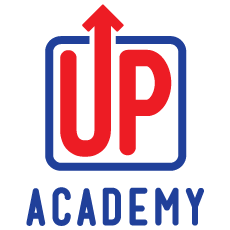Why A School? - Part 2
Originally posted November 16, 2016
Kids are made of love and acceptance, when we give them a chance, beautiful things happen. I was terrified to send Eliza to school. She was non-verbal, needed support to move around the classroom, go to the toilet, eat her lunch. She couldn’t come home and tell me if children were mean to her, or worse, if someone touched her, hurt her or abused her in some way. I didn’t know how the kids would react to her. But she made friends, very good friends. Her teachers were supportive and receptive to learning to work with her and teach her. She learned to read and do math, she was interested and curious in science and her project based learning group solved problems quickly with innovative solutions. Her friends wanted to sit with her at lunch, wanted to walk with her at recess, wanted to have her in their groups. All of the kids accepted her and she became one of the most popular kids at school. Kids just see kids, they don’t see all of the other “stuff” that adults see. Kids just see kids.
Kindness matters. “Fairness isn’t everyone getting the same, it’s everyone getting what they need”, (Rick Riordan). Empathy may be the trait that most determines success in the coming age of artificial intelligence and machine learning. How do we build little people to be successful, kind, empathetic adults who are capable of handling situations, making decisions, creating progress? Elementary school is the base for further education, it is the base for life, how do we give our kids the best so they can reach their potential? Through creating ways for them to work together, be kind and helpful, considerate and caring. Through inclusion of all types and abilities of people, through helping them to learn to follow their thoughts, express their ideas, build things, fail.
Seeing how my daughter fit in and made friends, the impact those friends and classmates had on her, and the impact she had on the lives of the other children and their families made me realize the only way to educate was in an inclusive environment. We all have so much to learn and share together. I was wanting to create a place where Eliza could reach her full potential, where she could get everything she needed in one place without all of the driving and scheduling, why couldn’t we do that for all of our kids. Many kids are shuttled after school to language, to music, to art, to other places to learn more things - why can’t we offer all of that in the school day? These classes and skills benefit all kids. Let’s create an inclusive academy where all kids can get the things they need, supported by excellent staff, to make it easier for parents, easier for kids and everyone can benefit.
In the early stages of planning the school I laid in bed one night crying while talking with my husband about how to make our school the best place for ALL students. In addition to Eliza, we have two other children. How could I justify taking all three of kids out of their school unless what we created was so much better? How do I provide the programs and ideas they need for success alongside the therapies that Eliza needed for success? Why should my other children have access to coding, foreign language, art, music, and making projects while Eliza works on holding herself up and walking? Doesn’t Eliza need all of this other knowledge too to compete in the world? Actually, it may be even more important for her because of the limitations she will have. Answering these questions became the basis of UP Academy.
It shouldn’t be this way.
There should be a better way.
So, I started to design one… UP Academy.
